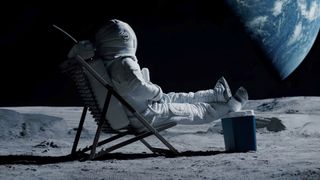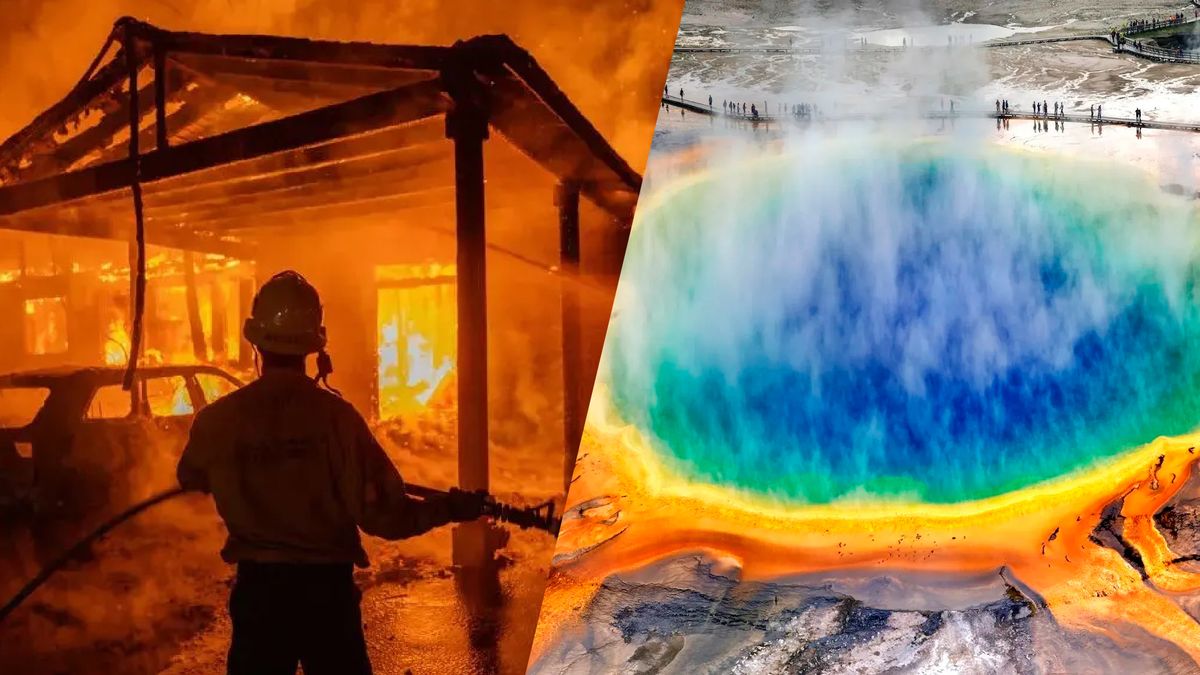From freezing thundersnow to deadly wildfires, this week’s science news has been nothing short of apocalyptic.
Flames have swept through over 30,000 acres (12,000 hectares) of Los Angeles County, killing at least 10 people and destroying more than 10,000 homes and other structures. Meanwhile, record-breaking low temperatures and heavy snowfall battered the East Coast and Midwest.
Meanwhile, the U.S. saw its first bird flu death on Monday (Jan. 6.)
But there has been some fun science news too — like predicting the future eruptions of one of America’s most famous volcanoes.
Yellowstone’s next eruption
The Yellowstone supervolcano last erupted approximately 70,000 years ago, according to the U.S. Geological Survey (USGS) — and it’s not expected to go again for hundreds of thousands of years. But when it does blow, where will this eruption take place?
By studying the volcano’s magma storage system, scientists have found that only one region on the northeast side of the national park is likely to erupt in the future.
Discover more planet earth news
—Scientists find hidden ‘hotspot’ that helped create the Great Lakes before North America even existed
—Yellowstone’s ‘queen of the wolves’ killed by rival pack after living to 11 years old and having 10 litters of pups
—Mysterious climate-changing eruption that turned the sun blue traced to remote Pacific island
Life’s Little Mysteries

Our largest satellite, the moon, appears to be a cold, lifeless rock. But like Earth, temperatures on the moon’s surface change throughout the day, and the fluctuations can be pretty dramatic.
John Monnier, a professor of astronomy at the University of Michigan, told Live Science that the moon’s temperature can range from about minus 148 degrees Fahrenheit to over 212 degrees Fahrenheit (minus 100 degrees Celsius to over 100 degrees Celsius).
Ancient Egyptian royal doctor’s tomb discovered
A 4,100-year-old tomb has been discovered in Saqqara, Egypt, which researchers say belonged to a doctor who “treated the pharaoh himself.”
According to the tomb’s inscriptions, the doctor — named Tetinebefou — held the title of “conjurer of the goddess Serget,” a deity who was thought to provide protection from scorpion stings. This indicates the man was a specialist in poisonous bites, researchers say. He was also the “chief dentist,” a title that the researchers say is exceedingly rare among archaeological records.
Discover more archaeology news
—Medieval crowns of Eastern European royalty hidden in cathedral wall since World War II finally recovered
—’Huge fortune’ from the 1600s, including gold and silver coins, found in German church where Martin Luther preached
—2,000-year-old painted penis bone found in quarry shaft from Roman Britain
Also in science news this week
—800-mile-long ‘DUNE’ experiment could reveal the hidden dimensions of the universe
—’Reanimated’ herpes viruses lurking in the brain may link concussions and dementia
—Most of the atoms in your body left the Milky Way on a ‘cosmic conveyor belt’ long before you were born, new study reveals
—Never-before-seen parasite is resistant to ivermectin
Science Spotlight
If you could travel back in time and prevent your grandfather from having children, you would erase your very existence. This so-called “grandfather paradox” is one of the main reasons why scientists have dismissed time travel as impossible. However, this issue may have been solved.
By combining general relativity, quantum mechanics and thermodynamics, Vanderbilt University physicist Lorenzo Gavassino has demonstrated how time travel might be feasible without these logical contradictions. The theory is based on one of the predictions of Einstein’s theory of general relativity, that there are paths through space-time that loop back on themselves.
Something for the weekend
If you’re looking for something a little longer to read over the weekend, here are some of the best long reads, book excerpts and interviews published this week.
—Our ancient primate ancestors mostly had twins — humans don’t, for a good evolutionary reason
—Why time slows down in altered states of consciousness
And for the latest in technology, don’t forget to check out our coverage of the 2025 Customer Electronic Show:
—Nvidia’s mini ‘desktop supercomputer’ is 1,000 times more powerful than a laptop — and it can fit in your bag
—17 weird, wonderful and terrifying robots we’ve seen at CES 2025 so far — from an android companion to a robotic mixologist
Science in pictures
An unnamed mountain in Antarctica has caught the eyes of conspiracy theorists due to its striking resemblance to the ancient Egyptian pyramids. However, the four symmetrical faces of this 4,150-foot-tall (1,265 meters) “pyramid” were not built by human (or alien) hands…
Want more science news? Follow our Live Science WhatsApp Channel for the latest discoveries as they happen. It’s the best way to get our expert reporting on the go, but if you don’t use WhatsApp we’re also on Facebook, X (formerly Twitter), Flipboard, Instagram, TikTok, Bluesky and LinkedIn.


